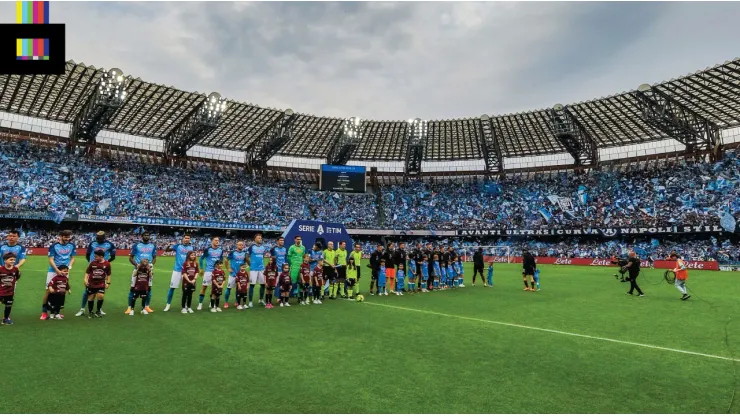
All soccer fields may look the same to the naked eye. The dimensions ought to be standardized across the professional game, right? Wrong. In reality, pitch sizes can vary from stadium to stadium.
Similar to baseball in America, historically this was often due to physical space limitations on the land a stadium was built upon. Fitting in seating, office spaces, support areas and everything else you need at a ground can force the field itself to be adjusted. But unlike baseball, the variation in field dimensions for soccer is much less extreme. Occasionally, a club can choose to set their pitch at a certain size to fit a style of play. Bigger fields work well for teams that focus on speed and open play. Smaller pitches can help squads who like to play a more compact and physical game.
FIFA’s recommended pitch size is 115 x 74 yards, but there is some wiggle room in the rules. For international quality fields, the dimensions must be between 110-120 yards for the touchline, and 70-82 yards for the goal line. Many clubs, like the bigger sides in England for example, fall right in the meaty part of that range.
Pitch sizes for Europe’s biggest clubs
The pitch dimensions for some of the top sides in European soccer are remarkably consistent. Particularly as new, or renovated, stadiums have been built, clubs are opting in large part for the ideal pitch dimensions. And as clubs vie for hosting rights to major international tournaments in addition to hosting their own games, it makes sense to stick to the FIFA guidelines. These days, a tiny, crowded pitch, snugly fit into a residential neighborhood, is something you’re only likely to see in the lower divisions.
So how do the top clubs in Europe stack up? Here’s quick look at some of the big teams and the fields they play on:
- FC Barcelona, Camp Nou, 115 x 74 yards
- Real Madrid, Santiago Benabéu, 115 x 74 yards
- Manchester United, Old Trafford, 115 x 74 yards
- Manchester City, Etihad Stadium, 115 x 74 yards
- Arsenal, Emirates Stadium, 115 x 74 yards
- Chelsea, Stamford Bridge, 113 x 74 yards
- Tottenham Hotspur, Tottenham Hotspur Stadium, 115 x 74 yards
- Paris Saint-Germain, Parc des Prices, 115 x 74 yards
- Bayern Munich, Allianz Arena, 115 x 74 yards
- Borussia Dortmund, Signal Iduna Park, 115 x 74 yards
- AC Milan / Inter Milan, San Siro, 115 x 74 yards
- Juventus, Allianz Stadium, 115 x 74 yards
- Napoli, Stadio Diego Maradona, 120 x 74 yards
- Celtic, Celtic Park, 114 x 74 yards
- Rangers, Ibrox, 115 x 74 yards
Nearly every massive European club plays on the exact same size pitch – the FIFA recommended 115×74. Chelsea have the shortest at 113 yards, while Celtic also clock in under the norm at 114.
The most drastic outlier are recently-crowned Serie A champions Napoli, whose pitch is the maximum 120 yards long. However, every one of these 16 top sides plays on the same 74 yard width pitch. To put into further context how similar each is, here’s an overlay of all 15 grounds:
Not the most interesting graphic, to be sure. And so the era of quirky pitch dimensions in the biggest competitions is largely behind us, with the modern game and venues adopting a (mostly) standard field.
But the charm and variety in field sizes still lives on in older stadiums and smaller leagues. From historic South American grounds, to America where we squeeze fields onto baseball diamonds, there are clubs worldwide still operating in that wiggle room in the rulebook.
Photo: Imago
200+ Channels With Sports & News
- Starting price: $33/mo. for fubo Latino Package
- Watch Premier League, Liga MX & Copa Libertadores
The New Home of MLS
- Price: $14.99/mo. for MLS Season Pass
- Watch every MLS game including playoffs & Leagues Cup
Many Sports & ESPN Originals
- Price: $10.99/mo. (or get ESPN+, Hulu & Disney+ for $14.99/mo.)
- Features Bundesliga, LaLiga, NWSL, & USL
2,000+ soccer games per year
- Price: $7.99/mo
- Features Champions League, Serie A, Europa League & EFL
175 Premier League Games & PL TV
- Starting price: $7.99/mo. for Peacock Premium
- Watch 175 exclusive EPL games per season